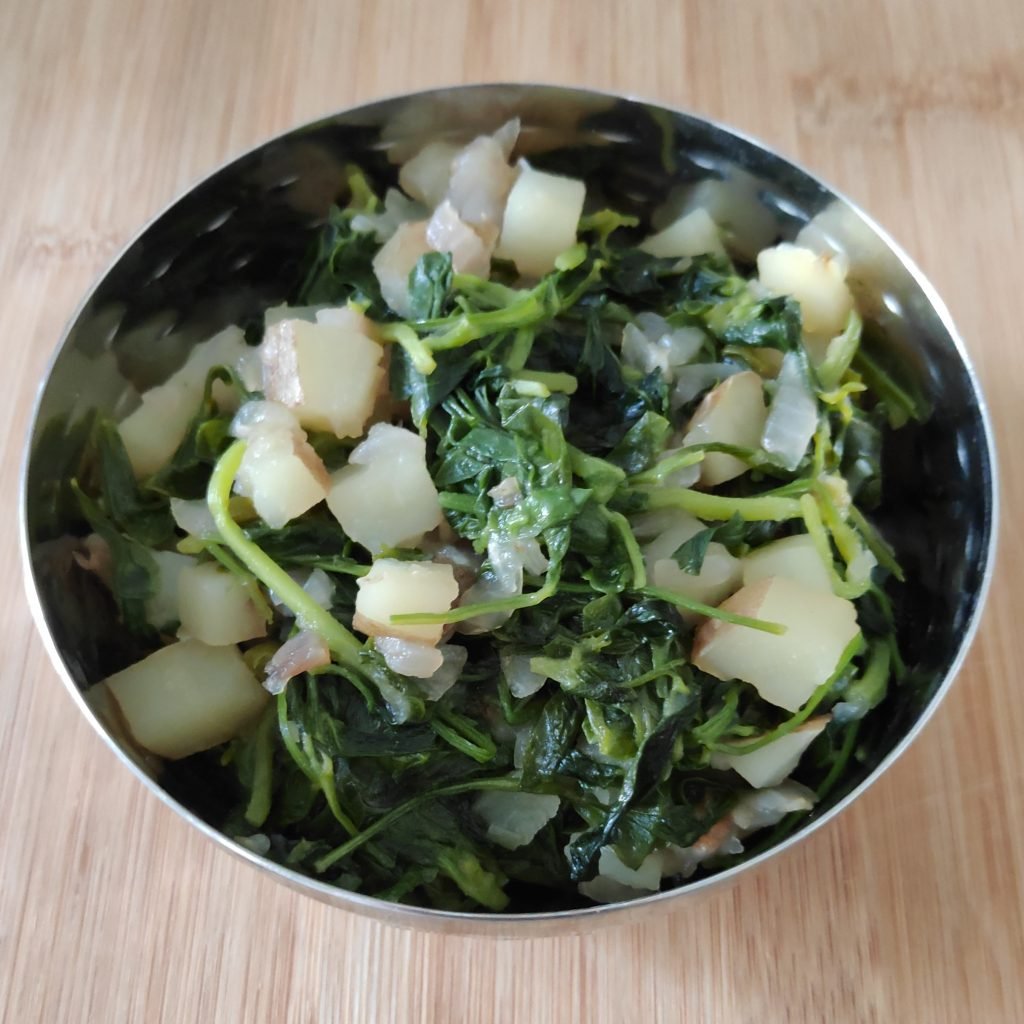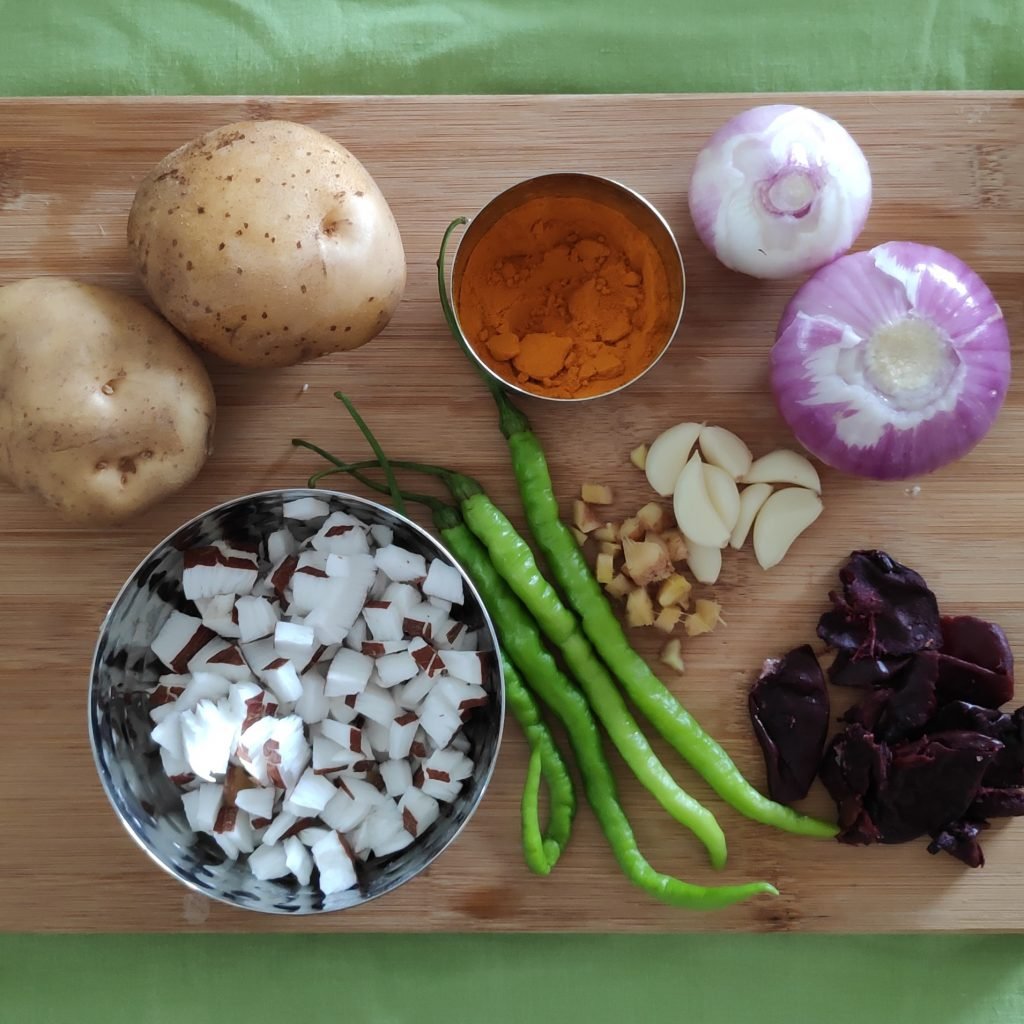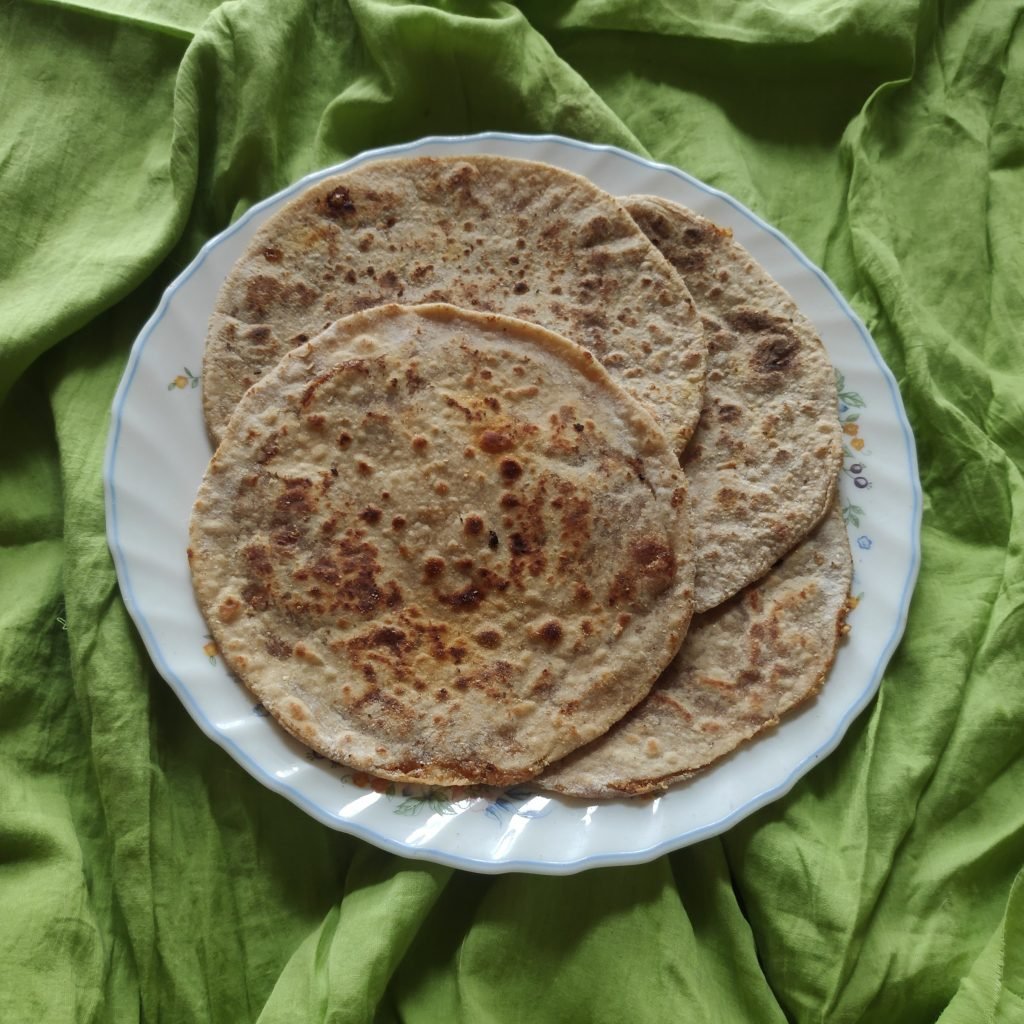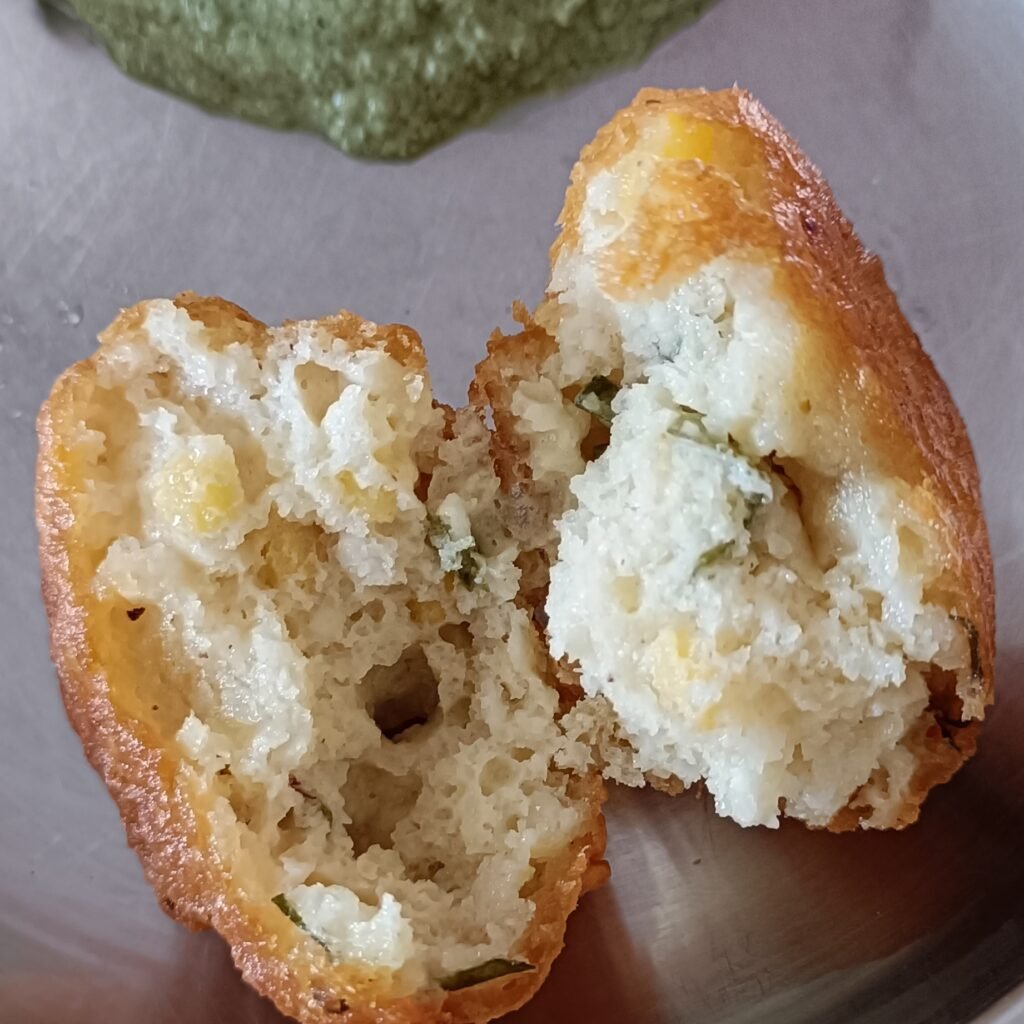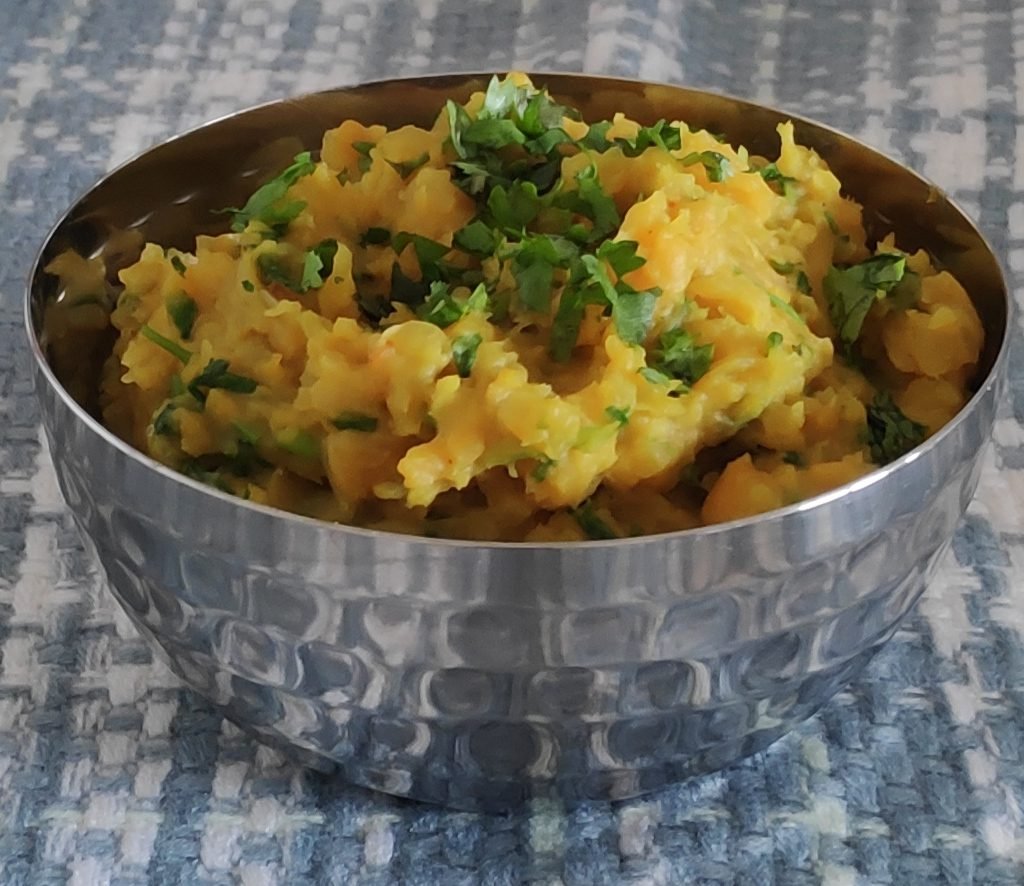
Kobicha Zunka and Pithla (Cabbage and Chickpea Flour Dish)
Besan or chickpea flour is very versatile has been a staple in Indian cooking for centuries. It is used in a variety of dishes like cheelas, pakodas, curries, sweet laddus. It’s also a very economical ingredient because it grows in quantity when it is cooked with added water.
Chickpea flour is full of vitamins, minerals, resistant starch, and antioxidants that help fight free radicals. It is packed with fiber and has a low glycemic index (GI) releasing energy slowly. It is also higher in protein than wheat flour and provides nearly all of the essential amino acids we need. The high fiber, resistant starch, high protein content and its low GI all help to keep you satiated for a long time while nourishing the cells in the body. It also has 25% fewer calories than refined wheat flour helping to maintain weight by helping you feel full without adding calories with the same amount of food you would otherwise consume.

